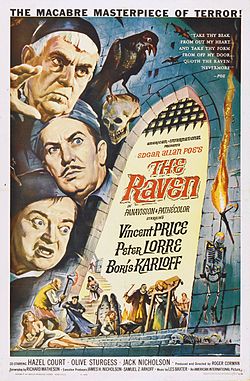
Back B-film Afrikaans Cine de serie B AN فيلم درجة ثانية Arabic فيلم B ARZ Serie B AST B filmləri Azerbaijani Sèrie B (cinema) Catalan Béčkový film Czech B-film Danish B-Movie German
| Part of a series on |
| B movies |
|---|
 |

A B movie, or B film, is a type of cheap, poorly made commercial motion picture. Originally, during the Golden Age of Hollywood, this term specifically referred to films meant to be shown as the lesser-known second half of a double feature, somewhat similar to B-sides in recorded music. However, the production of such films as "second features" in the United States largely declined by the end of the 1950s. This shift was due to the rise of commercial television, which prompted film studio B movie production departments to transition into television film production divisions. These divisions continued to create content similar to B movies, albeit in the form of low-budget films and series.
Today, the term "B movie" is used in a broader sense. In post-Golden Age usage, B movies can encompass a wide spectrum of films, ranging from sensationalistic exploitation films to independent arthouse productions.
In either usage, most B movies represent a particular genre; the Western was a Golden Age B movie staple, while low-budget science-fiction and horror films became more popular in the 1950s. Early B movies were often part of series in which the star repeatedly played the same character. Almost always shorter than the top-billed feature films,[1] many had running times of 70 minutes or less. The term connoted a general perception that B movies were inferior to the more lavishly budgeted headliners; individual B films were often ignored by critics.
Latter-day B movies still sometimes inspire multiple sequels, but series are less common. As the average running time of top-of-the-line films increased, so did that of B pictures. In its current usage, the term has somewhat contradictory connotations: it may signal an opinion that a certain movie is (a) a "genre film" with minimal artistic ambitions or (b) a lively, energetic film uninhibited by the constraints imposed on more expensive projects and unburdened by the conventions of putatively serious independent film. The term is also now used loosely to refer to some higher-budget, mainstream films with exploitation-style content, usually in genres traditionally associated with the B movie.
From their beginnings to the present day, B movies have provided opportunities both for those coming up in the profession and others whose careers are waning. Celebrated filmmakers such as Anthony Mann and Jonathan Demme learned their craft in B movies. They are where actors such as John Wayne and Jack Nicholson first became established, and they have provided work for former A movie actors and actresses, such as Vincent Price and Karen Black. Some actors and actresses, such as Bela Lugosi, Eddie Constantine, Bruce Campbell, and Pam Grier, worked in B movies for most of their careers.[citation needed] The terms "B actor and actress" are sometimes used to refer to performers who find work primarily or exclusively in B pictures.
- ^ "B-film | motion-picture commercial grade". Encyclopædia Britannica. Retrieved August 4, 2017.